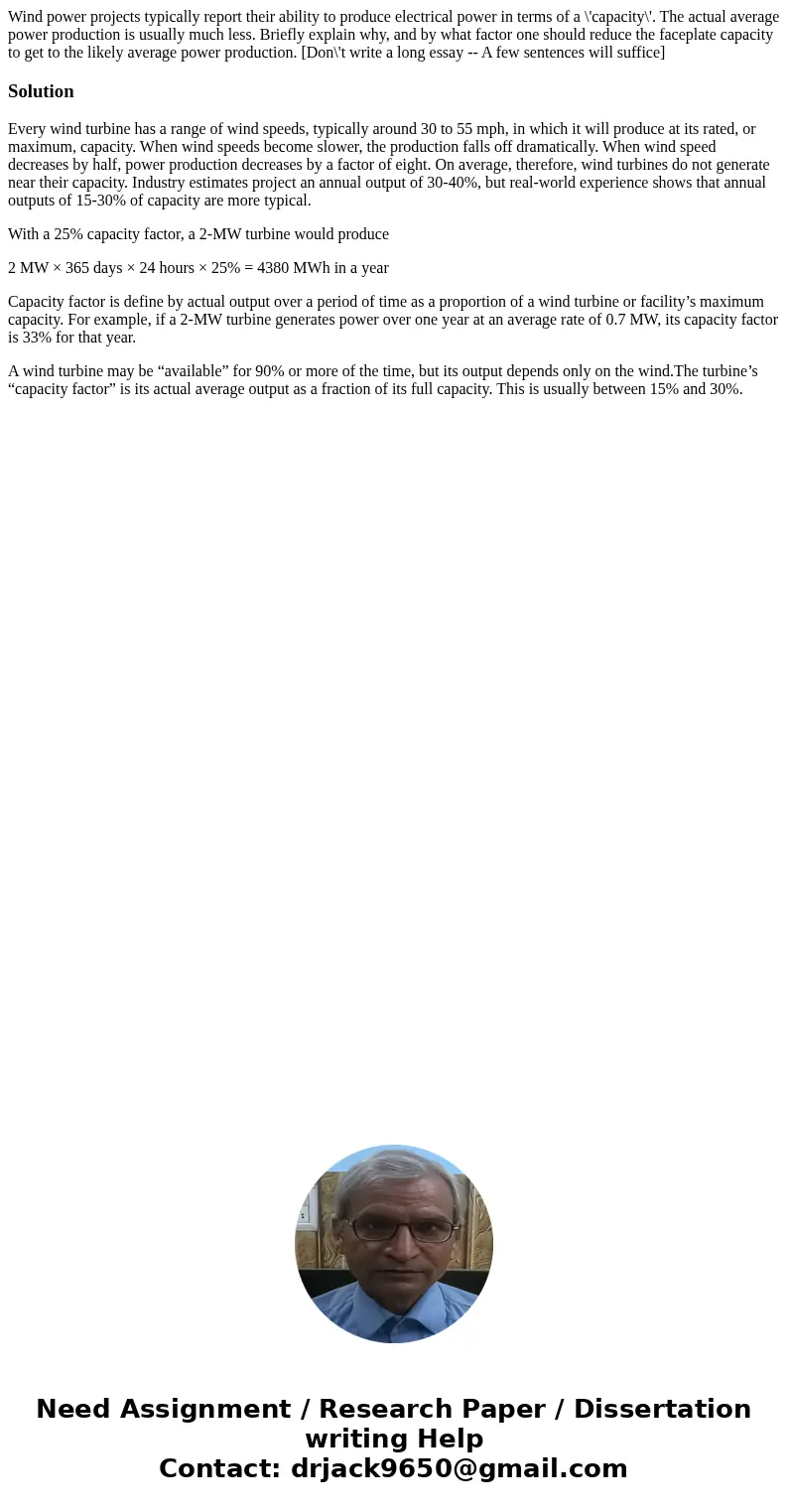Wind power projects typically report their ability to produc
Wind power projects typically report their ability to produce electrical power in terms of a \'capacity\'. The actual average power production is usually much less. Briefly explain why, and by what factor one should reduce the faceplate capacity to get to the likely average power production. [Don\'t write a long essay -- A few sentences will suffice]
Solution
Every wind turbine has a range of wind speeds, typically around 30 to 55 mph, in which it will produce at its rated, or maximum, capacity. When wind speeds become slower, the production falls off dramatically. When wind speed decreases by half, power production decreases by a factor of eight. On average, therefore, wind turbines do not generate near their capacity. Industry estimates project an annual output of 30-40%, but real-world experience shows that annual outputs of 15-30% of capacity are more typical.
With a 25% capacity factor, a 2-MW turbine would produce
2 MW × 365 days × 24 hours × 25% = 4380 MWh in a year
Capacity factor is define by actual output over a period of time as a proportion of a wind turbine or facility’s maximum capacity. For example, if a 2-MW turbine generates power over one year at an average rate of 0.7 MW, its capacity factor is 33% for that year.
A wind turbine may be “available” for 90% or more of the time, but its output depends only on the wind.The turbine’s “capacity factor” is its actual average output as a fraction of its full capacity. This is usually between 15% and 30%.

 Homework Sourse
Homework Sourse